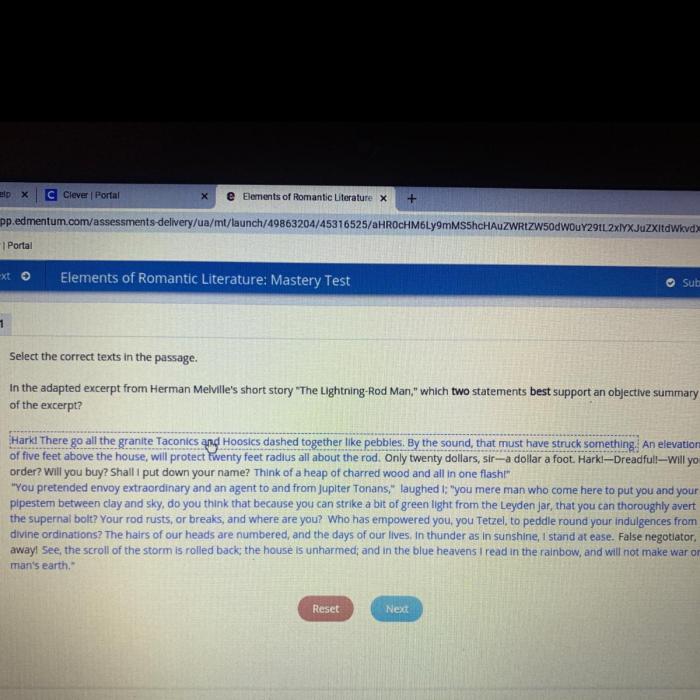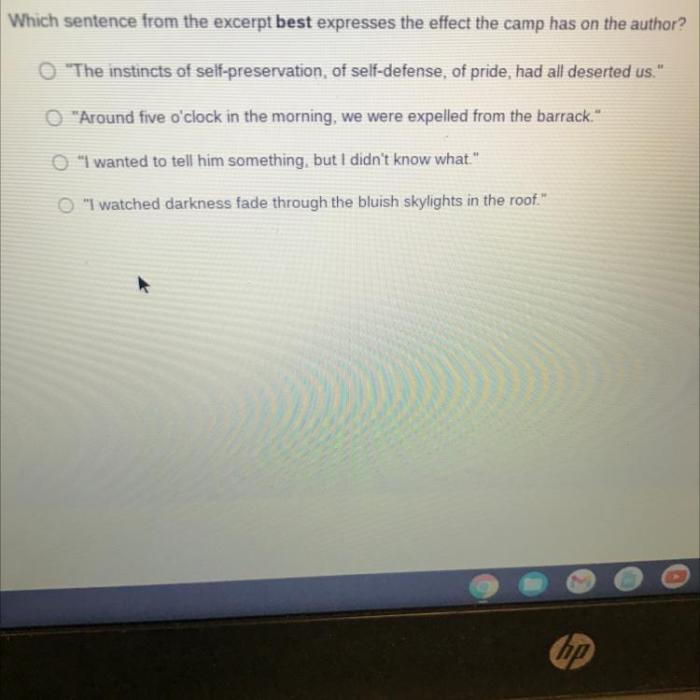The following excerpt represents a melody without harmonic accompaniment. – The following excerpt represents a melody without harmonic accompaniment, a captivating musical concept that has played a significant role in the evolution of music. Stripped of harmonic support, these melodies rely solely on rhythm, pitch, and form to convey their expressive power, offering a unique and intriguing listening experience.
Throughout history, melodies without harmonic accompaniment have found their place in diverse musical traditions and cultures, from ancient folk songs to contemporary film scores. They challenge composers to explore the boundaries of musical expression, pushing the limits of melodic invention and creativity.
Introduction

A melody without harmonic accompaniment is a musical line that stands alone, without the support of chords or other harmonies. These melodies have a unique expressive quality and have been used in a wide variety of musical traditions throughout history.
The purpose of a melody without harmonic accompaniment is to focus attention on the melodic line itself. This allows the listener to appreciate the nuances of the melody, such as its rhythm, pitch, and form. Melodies without harmonic accompaniment can also be used to create a sense of intimacy and introspection.
Structural Elements

The key structural elements of a melody without harmonic accompaniment are rhythm, pitch, and form.
Rhythm, The following excerpt represents a melody without harmonic accompaniment.
The rhythm of a melody is the pattern of long and short notes. Rhythm can be used to create a sense of movement and energy, or it can be used to create a more relaxed and meditative atmosphere.
Pitch
The pitch of a melody is the height or lowness of the notes. Pitch can be used to create a sense of melody and direction, or it can be used to create a more dissonant and challenging sound.
Form
The form of a melody is the way in which the melody is organized. Form can be used to create a sense of structure and unity, or it can be used to create a more free and improvisational sound.
Techniques and Approaches

There are a number of techniques that can be used to create effective melodies without harmonic accompaniment. Some of the most common techniques include:
- Repetition: Repeating a melodic phrase can help to create a sense of unity and cohesion.
- Variation: Varying a melodic phrase can help to create a sense of interest and development.
- Contrast: Contrasting different melodic phrases can help to create a sense of drama and excitement.
- Embellishment: Adding embellishments to a melodic phrase can help to create a sense of richness and complexity.
Different composers have used different approaches to creating melodies without harmonic accompaniment. Some composers have focused on creating melodies that are simple and lyrical, while others have focused on creating melodies that are more complex and challenging.
Historical Context: The Following Excerpt Represents A Melody Without Harmonic Accompaniment.

Melodies without harmonic accompaniment have been used in a wide variety of musical traditions throughout history. In some traditions, such as the Gregorian chant, melodies without harmonic accompaniment are the norm. In other traditions, such as the Western classical tradition, melodies without harmonic accompaniment are often used as a way to create a sense of intimacy and introspection.
The development of melodies without harmonic accompaniment has been influenced by a number of factors, including the development of musical instruments, the development of musical notation, and the changing tastes of audiences.
Questions and Answers
What is a melody without harmonic accompaniment?
A melody without harmonic accompaniment is a musical composition that consists of a single melodic line, without the support of chords or other harmonic elements.
What are the key structural elements of a melody without harmonic accompaniment?
The key structural elements of a melody without harmonic accompaniment include rhythm, pitch, and form.
How are melodies without harmonic accompaniment used in contemporary music?
Melodies without harmonic accompaniment are used in a variety of contemporary musical applications, including film scores, television soundtracks, and video game music.